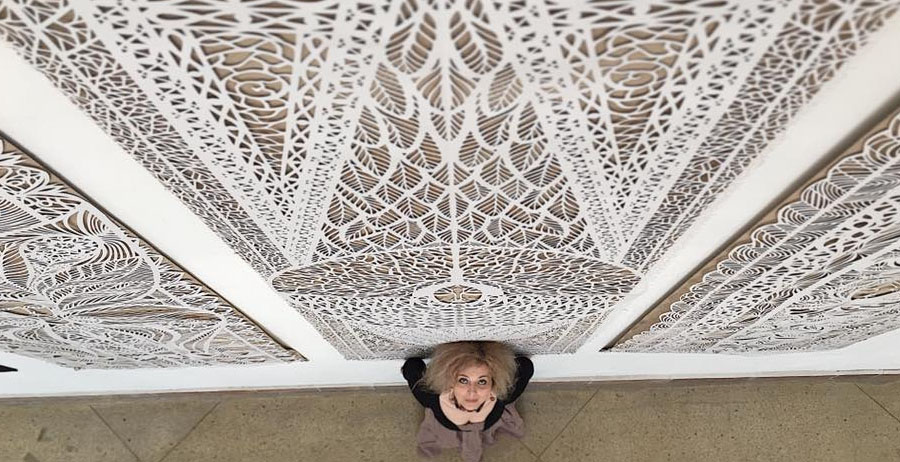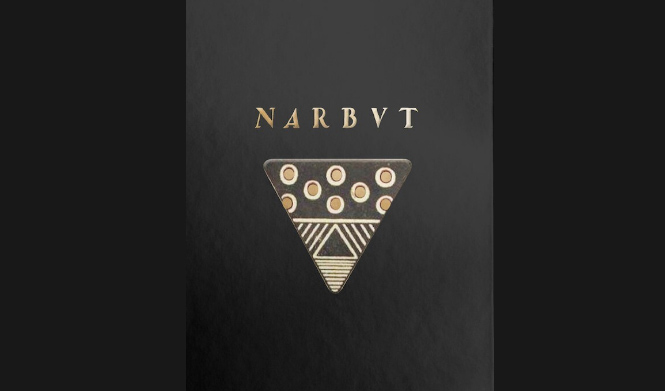Authentic Ukraine — the most comprehensive digital project about Ukraine
Authentic Ukraine, without any doubt, is the most professional and comprehensive digital project about Ukraine. We have already written about it:
To briefly summarize, the project offers an opportunity to explore a wide range of Ukrainian intangible cultural heritage, such as the Kosiv tradition of hand-drawn ceramics, Petrykivka painting, Kozak songs from Dnipro Oblast, the technique of “white on white” embroidery, and much more.
Also, Authentic Ukraine provides several dozen virtual tours in three thematic areas: the open-air museums, the unique architecture of wooden churches, and a look behind the scenes of opera houses in Ukraine.
The open-air museums include several museums of folk culture, architecture, and life that show villages from the end of the 19th century and earlier, including the residence of Bohdan Khmelnytskyi, one of the famous Ukrainian hetmans (leaders of the Kozaks) in the 17th century; and Zaporizska Sich — the Kozaks’ main fortress in the 17th-18th centuries built on a rocky island in the middle of the Dnipro River.

Altogether, there are still up to 3,000 wooden churches in Ukraine. Traditionally, most of the Ukrainian churches were built of wood, except for monasteries and a few central churches from Rus time in Kyiv and Chernihiv. The oldest wooden churches were built according to a unique technique that avoided the use of a single nail. Many such churches from 17th-18th centuries are now listed as UNESCO sites.
Take a walk in Baturyn — the capital of Ukrainian Kozaks

The town of Baturyn was the center of the eastern Hetmanshchyna (1658-1768), an autonomous Kozak republic ruled by its Hetman and Kozak Council as part of the Russian empire since 1654 (the western Hetmanshchyna was included in the Polish-Lithuanian Commonwealth with nearly the same rights). The town prospered under the rule of Hetman Ivan Mazepa (1687–1708). 40 churches and chapels, two monasteries and a college for government officials and diplomats functioned in Baturyn during that time.
However, in 1708 the city was destroyed by Muscovy. During the Northern War, Hetman Mazepa supported Sweden’s king against the first tsar of the emerging Russian Empire, Peter I. The Muscovites won the war, with the town of Baturyn being burned to the ground in its entirety. Almost all of its 20,000 inhabitants were killed, including women and children, with only 1,500 managing to escape. This marked the beginning of the decay of Kozak autonomy. Recent excavations in Baturyn between 2005 and 2009 show the enormous extent of violence, torture and destruction the city experienced in 1708.
Subsequently, almost nobody lived in Baturyn until the last Ukrainian Hetman and nobleman of the Russian Empire, Kyrylo Rozumovskyi, built his palace there in 1803. Today Baturyn is a small provincial town of some 3,000 inhabitants without any significant status, while in the 17th century it was competing with Kyiv.
Former Ukrainian president Viktor Yushchenko organized the rebuilding of part of Baturyn. Today it is a complex of historical sites and museums titled “The Capital of Ukrainian Hetmans”.
You can visit:
- Virtual tour in the citadel of Baturyn fortress
- Virtual tour in the Palace of Kyrylo Rozumovskyi
- Virtual tour in the Baturyn archeological museum
All tours were prepared by Ukraine.incognito project.

Ukraine WOW — exhibition about Ukraine by Ukrainian railways
Ukrainian railways (Ukrzaliznytsia) prepared an exhibition in Kyiv’s main railway station. Located on the last 14th platform, the exhibition shows many unusual and interesting Ukrainian locations and has recently been digitized.
This modern exhibition combines important things relating to Ukrainian railways, like couchette train carriages where you can sleep, suitcases, minor and major railways, and also specific facts about Ukrainian culture, people, and places. Thus, the feeling of a real trip is created.
Altogether 300,000 people have visited the exhibition since its opening in 2020. With the current coronavirus pandemic, it can be visited online.
“A sincere wow is the wow of a child,” the project managers explain. Therefore, in order to feel small again, and remember the first taste of a journey, the first zone in the exhibition is an enlarged train couchette.

The 3D model of the exhibition is available here. While “walking”, you will see texts on the walls in Ukrainian. All these texts, one by one, are translated into English just beneath the 3D model.
Online museums by Ukraine.incognito
The project Ukraine.incognito has created 3D visualizations of various Ukrainian museums. Unfortunately, the audio-guide is yet to be translated into English. Nonetheless, even those who don’t understand Ukrainian may take an interesting walk. Below, we have chosen some of the museums:
Virtual tour in the museum of Volyn icons where you can observe a unique collection of Ukrainian orthodox icons mainly from the Volyn region painted in the 16th-18th centuries. Icons were collected in 1980-1985 from churches that were closed, ruined or rebuilt during Soviet times.
The archeological museum “The old Aratta-Ukaine” is located in Trypillia village near Kyiv, where the famous Trypillia civilization was excavated by archeologists for the first time. The Trypillia civilization existed in Ukraine from 5000-3000 B.C. It was one of the first agricultural civilizations in the world, well known for the unique solar form of its villages and famous pottery with sacred symbols and a kind of pictographic “writing.”
The castle in Dubno was built by Prince Kostiantyn Ostrozkyi in 1492. The fortified city provided military protection for the region, and income from trade for its owner. Kostiantyn Ostrozkyi was one of the richest nobleman in the Polish-Lithuanian Commonwealth. Being of Rus’ origin, Kostiantyn Ostrozkyi and his son Kostiantyn Vasyl Ostrozkyi are also known as philanthropists who contributed to the development of Rus’ and Ukrainian culture. He built many castles and churches and had a private army that could mobilize tens of thousands of men.

Ostroh Castle is yet another castle built by Kostiantyn Ostrozkyi. Today, you can undertake a virtual tour in the museum of books and typography and a virtual tour through the museum of local history. The first typography in Ukraine was founded by Kostiantyn Ostrozkyi in this castle.

You can also visit the home of the 18th century Ukrainian philosopher Hryhoriy Skovoroda. “The world had been trying to catch me but couldn’t” was written on Skovoroda’s grave. He graduated from the famous 18th century Kyiv-Mohyla Academy and could have had a successful career. However, he became a wandering philosopher who criticized the contemporary church but at the same time propagated personal connection with God. His last years were spent in a village in the Kharkiv region where a small museum is now located.
3D tours
The last thing worth mentioning is the web-page Ukraine 3D. Designed mainly to assist visitors with planning real trips, this page also offers you the opportunity to walk through many Ukrainian cities and castles, such as Kamianets-Podilskyi Castle, as well as virtually visit some famous man-made parks and gardens, like Sofiyivka park.

As a bonus, here is 36 minutes video by Ukrainer in English, that shows lovely places:
Read also:
- Modernized past: how today’s Ukrainian culture combines tradition and modernity
- Hutsuliya – the vivid colours of Ukraine’s Carpathian mountaineers (Photos)
- Explosion of new Ukrainian music after introduction of protectionist language quotas
- What it means to organize a major music festival in Kyiv – interview with Atlas Weekend founder
- Writer Andriy Liubka: O sancta simplicitas!
- Why Ukraine’s language law is more relevant than ever
- Meet Ukraїner, “project that tells the world about the least discovered country in Europe”








